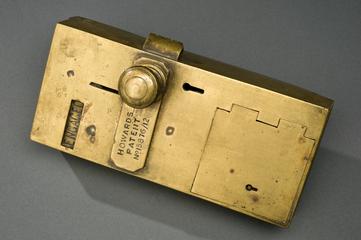
Paper sensors to detect COVID-19 in wastewater
- Made:
- 2020-2021 in United Kingdom






5 paper sensors used to detect COVID-19 in wastewater, developed at Cranfield University, made in the UK, 2020-2021
Throughout the pandemic, testing people has been an important way to track the spread of COVID-19. However, testing wastewater has also been an effective public health tool and it has helped scientists to detect earlier how and where COVID-19 is spreading. Markers of the COVID-19 virus can survive for several days in wastewater and scientists can identify these using testing. In Paris, scientists sampled wastewater over the course of a month in March and April 2020. They found a rise and fall in COVID-19 markers which mirrored the shape of the COVID-19 outbreak in the city as cases rose and then were controlled by lockdown. One use of wastewater monitoring, in England, has been to track COVID-19 variants in communities after surge testing has finished. This helps to establish whether the variant is still spreading in the community. Wastewater monitoring is a longstanding technique and in Israel in 2013, for example, scientists quickly identified a polio outbreak because of regular wastewater monitoring.
These devices have been developed during the pandemic and build on the existing technology for wastewater testing. They are simple paper-based sensors and do not need to be processed in a laboratory. This type of sensor is particularly useful in areas with more limited resources as they are cheap, easy to use, and give a result in around an hour.
Details
- Category:
- Public Health & Hygiene
- Object Number:
- 2022-666
- Materials:
- paper (fibre product)
- Measurements:
-
folded: 33 mm x 33 mm
unfolded: 33 mm x 161 mm
- type:
- water testing kit



